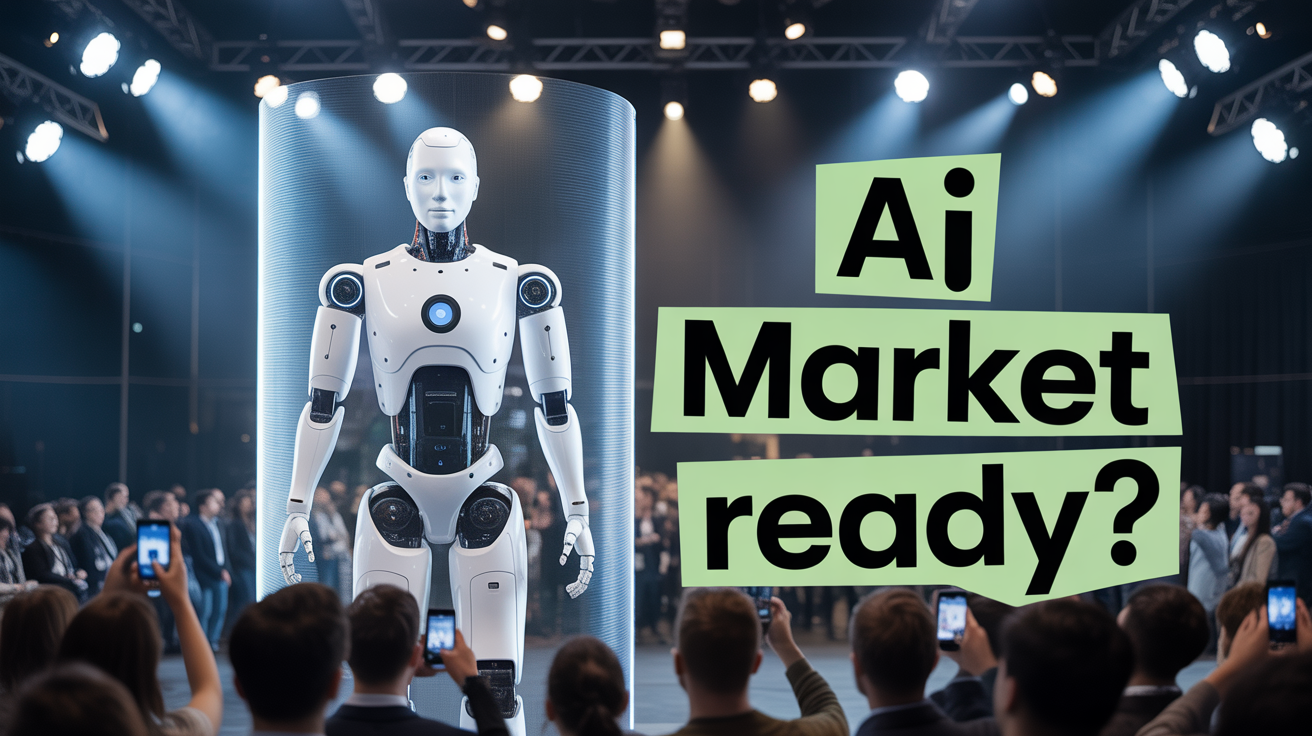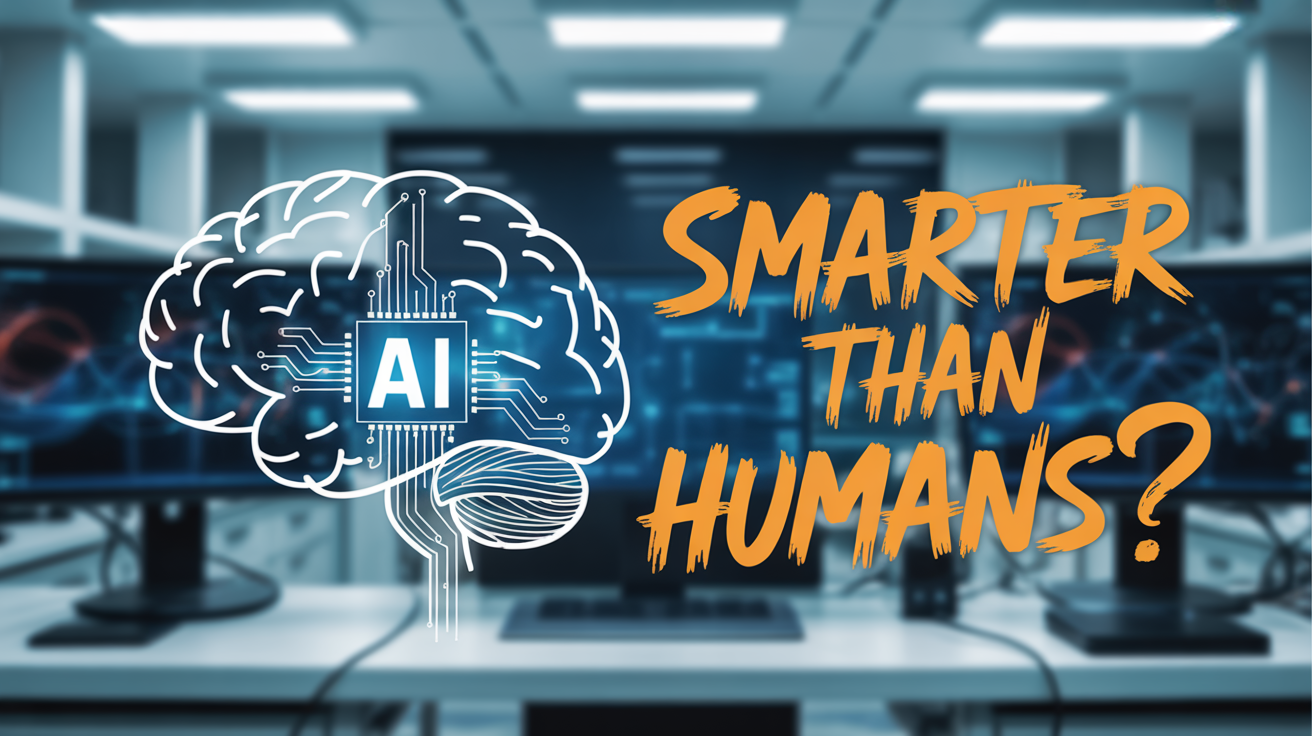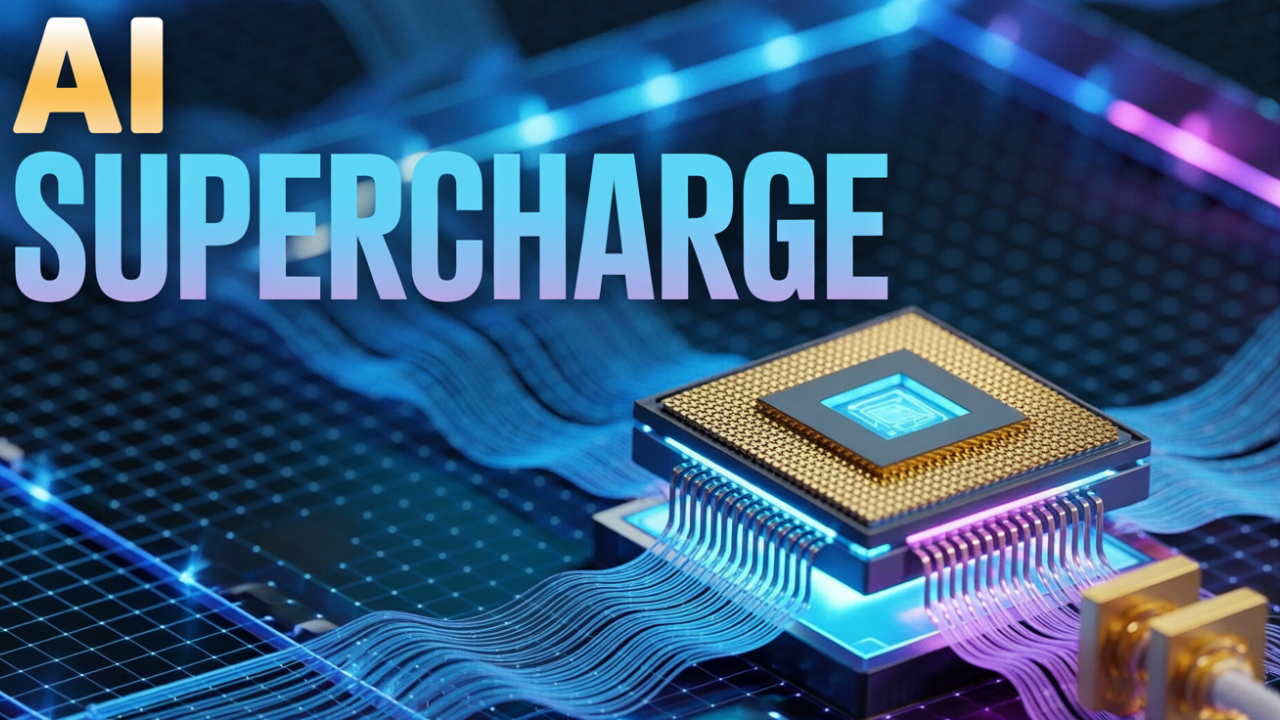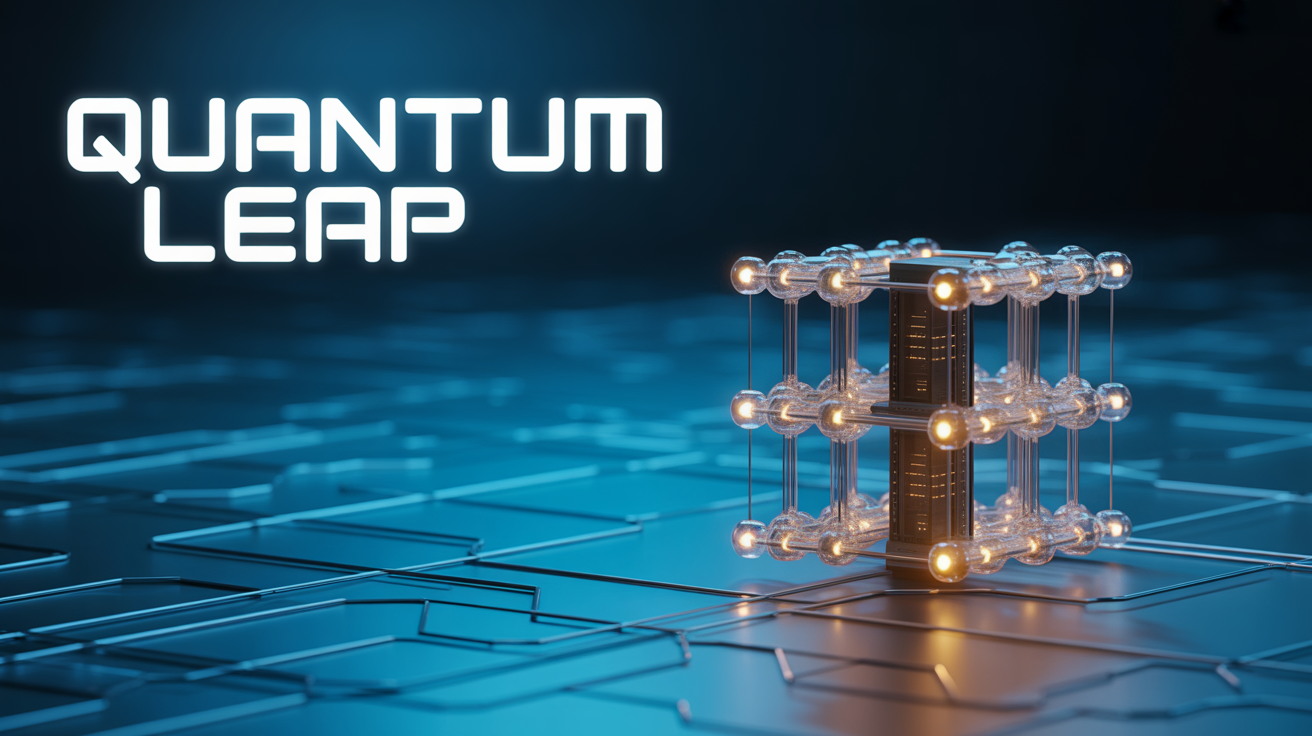

Humanoid robots aren't science fiction anymore. They're entering the workforce.
From Tesla's Optimus to Boston Dynamics' Atlas, humanoid AI robots are transitioning from research demonstrations to commercial deployment. The convergence of advanced AI, sophisticated sensors, and breakthrough mobility systems is creating robots that can work alongside humans in real-world environments. This transformation is happening faster than most people realize.
In this comprehensive analysis, we'll explore how humanoid AI robotics is achieving market readiness across five critical domains: breakthrough technologies enabling human-like capabilities, commercial applications transforming industries, market dynamics driving rapid adoption, infrastructure requirements for deployment, and real-world case studies proving viability. These developments represent the foundation of the next industrial revolution.
Advanced AI Integration
Humanoid robots with sophisticated AI enabling autonomous decision-making and human-like interaction
Industrial Applications
Robots deployed in manufacturing, logistics, and service industries with measurable productivity gains
Market Growth
$173 billion robotics market by 2030 with humanoid robots capturing significant market share
Technology Breakthroughs: The Science Behind Humanoid AI Capabilities
Humanoid AI robots represent the convergence of multiple breakthrough technologies that enable human-like capabilities. Advanced computer vision systems, sophisticated AI algorithms, and breakthrough mobility technologies are creating robots that can navigate complex environments, manipulate objects with precision, and interact naturally with humans. This technological foundation is what makes commercial deployment possible.
The core technologies driving humanoid AI include multi-modal AI systems that process visual, auditory, and tactile data simultaneously, advanced locomotion systems enabling bipedal movement and balance, and dexterous manipulation capabilities allowing precise object handling. These systems work together to create robots that can operate in human-designed environments without modification.
Case Study: Tesla Optimus Technology Stack
Tesla's Optimus humanoid robot demonstrates the integration of advanced technologies in a commercial product. The robot features Tesla's neural network architecture for real-time decision-making, advanced computer vision for object recognition, and sophisticated actuators enabling human-like dexterity. This represents a significant leap from research prototypes to production-ready systems.
The integration of these technologies enables Optimus to perform complex tasks like sorting objects, navigating dynamic environments, and learning new skills through demonstration. This technological foundation is what makes humanoid robots viable for commercial deployment.
The technological breakthroughs extend beyond hardware to include AI training methodologies that enable robots to learn complex behaviors, simulation environments for safe testing and training, and human-robot interaction protocols ensuring safe collaboration. These advances are creating the foundation for widespread humanoid robot deployment across multiple industries.
Commercial Applications: Humanoid Robots Transforming Industries
Humanoid AI robots are finding practical applications across multiple industries, from manufacturing and logistics to healthcare and customer service. Unlike traditional industrial robots that require specialized environments, humanoid robots can operate in existing human workspaces, making them ideal for tasks that require flexibility and adaptability. This versatility is driving rapid adoption across diverse sectors.
Manufacturing and Industrial Applications
Manufacturing companies are deploying humanoid robots for tasks that require human-like dexterity and decision-making. These robots can handle complex assembly operations, quality inspection, and material handling tasks that were previously impossible to automate. The ability to work alongside human workers without safety barriers makes them particularly valuable in mixed human-robot environments.
Case Study: BMW's Humanoid Robot Deployment
BMW has deployed humanoid robots in their manufacturing facilities for complex assembly tasks. The robots work alongside human workers, handling precision assembly operations and quality control tasks. This deployment demonstrates the practical value of humanoid robots in industrial settings, with measurable improvements in productivity and quality.
Similar deployments are active at Boston Dynamics partner facilities, where Atlas robots perform complex manipulation tasks, and Figure AI is deploying robots in logistics and warehouse operations. These implementations represent the vanguard of humanoid robot adoption.
Service and Healthcare Applications
Service industries are adopting humanoid robots for customer interaction, assistance, and support tasks. In healthcare, robots are being deployed for patient care, rehabilitation assistance, and medical facility operations. The human-like form factor makes these robots more acceptable to users and enables them to operate in environments designed for humans.
Leading technology companies are investing heavily in humanoid robot applications. SoftBank's Pepper robots are deployed in retail and hospitality settings, while Honda's ASIMO technology has been adapted for healthcare applications. These deployments demonstrate the commercial viability of humanoid robots across diverse service sectors.
Market Dynamics: The Economics Driving Humanoid Robot Adoption
The humanoid robot market is experiencing explosive growth driven by technological advances, cost reductions, and increasing demand for automation solutions. Market analysts project the global robotics market will reach $173 billion by 2030, with humanoid robots capturing a significant and growing share. This growth is fueled by both technological breakthroughs and economic pressures driving automation adoption.
Cost Economics and ROI
The economics of humanoid robots are becoming increasingly favorable as technology costs decrease and capabilities increase. While initial deployment costs remain significant, the total cost of ownership is becoming competitive with human labor for many applications. This economic viability is driving adoption across industries facing labor shortages and cost pressures.
Market Growth Projections and Investment Trends
The humanoid robot market is projected to grow at a compound annual growth rate of 35% through 2030, reaching $38 billion in market size. This growth is driven by McKinsey's analysis showing that automation could affect 800 million jobs globally by 2030, creating massive demand for robotic solutions.
Leading investors including Agility Robotics and Figure AI have raised hundreds of millions in funding, demonstrating strong investor confidence in the market potential. These investments are accelerating technology development and market deployment.
Competitive Landscape and Market Leaders
The humanoid robot market is becoming increasingly competitive, with established companies and startups vying for market share. Tesla, Boston Dynamics, and Honda represent the established players, while companies like Figure AI, Agility Robotics, and 1X Technologies are emerging as significant competitors. This competition is driving innovation and accelerating market development.
The competitive dynamics are creating opportunities for specialization, with different companies focusing on specific applications and markets. This specialization is enabling faster development and deployment of humanoid robots tailored to specific industry needs, accelerating overall market growth and adoption.
Infrastructure Requirements: Building the Foundation for Humanoid Robot Deployment
Successful humanoid robot deployment requires significant infrastructure investments in training, maintenance, and integration systems. Organizations must develop comprehensive strategies for robot onboarding, skill development, and operational management. This infrastructure is critical for achieving the productivity gains and cost savings that make humanoid robots economically viable.
Training and Development Systems
Humanoid robots require sophisticated training systems to learn complex tasks and adapt to new environments. This includes simulation environments for safe testing, machine learning pipelines for skill development, and human demonstration systems for task learning. The quality of these training systems directly impacts robot performance and deployment success.
Training Infrastructure Requirements
Organizations deploying humanoid robots must invest in comprehensive training infrastructure including simulation environments, data collection systems, and machine learning pipelines. This infrastructure enables robots to learn new skills, adapt to changing conditions, and improve performance over time. The investment in training systems is critical for long-term success and ROI.
- • Simulation environments for safe testing and training
- • Data collection systems for performance monitoring
- • Machine learning pipelines for skill development
- • Human demonstration systems for task learning
Maintenance and Support Systems
Humanoid robots require specialized maintenance and support systems to ensure reliable operation. This includes predictive maintenance systems, spare parts management, and technical support infrastructure. The complexity of humanoid robots makes maintenance more challenging than traditional industrial robots, requiring specialized expertise and systems.
Leading companies are developing comprehensive support ecosystems for humanoid robot deployment. Tesla's service network is being adapted for Optimus robots, while Boston Dynamics offers specialized support services for Atlas deployments. These support systems are essential for successful commercial deployment and customer satisfaction.
Real-World Case Studies: Humanoid Robots Proving Commercial Viability
Humanoid AI robots are no longer experimental prototypes—they're delivering measurable business value in production environments. From manufacturing facilities to healthcare settings, real-world deployments are demonstrating the practical potential of humanoid robots. These case studies provide concrete evidence of commercial viability and market readiness.
Manufacturing Success Stories
Manufacturing companies are achieving significant productivity gains through humanoid robot deployment. These robots are handling complex assembly tasks, quality control operations, and material handling with precision and reliability. The ability to work in existing human workspaces without modification makes them particularly valuable for manufacturers.
Case Study: Agility Robotics in Logistics
Agility Robotics has deployed their Digit humanoid robots in logistics and warehouse operations, achieving 40% improvement in material handling efficiency. The robots work alongside human workers, handling repetitive tasks while humans focus on complex decision-making. This deployment demonstrates the practical value of humanoid robots in logistics operations.
Similar success stories are emerging from autonomous intelligence systems integration, where humanoid robots are being combined with advanced AI for even greater capabilities. These implementations represent the cutting edge of humanoid robot deployment.
Healthcare and Service Applications
Healthcare facilities are deploying humanoid robots for patient assistance, rehabilitation support, and facility operations. The human-like form factor makes these robots more acceptable to patients and enables them to operate in healthcare environments designed for human interaction. These deployments are demonstrating the potential for humanoid robots in service industries.
Leading healthcare organizations are piloting humanoid robot deployments for various applications. Mayo Clinic is testing robots for patient assistance, while Johns Hopkins is exploring rehabilitation applications. These pilots are providing valuable data on the effectiveness and acceptance of humanoid robots in healthcare settings.
Future Outlook: The Path to Widespread Humanoid Robot Adoption
The humanoid robot industry is on the cusp of widespread commercial adoption, with market projections indicating rapid growth through 2030. Technology advances, cost reductions, and increasing demand for automation solutions are converging to create the conditions for mass deployment. Organizations that prepare now will be positioned to capitalize on this transformation.
Technology Roadmap and Capability Evolution
Humanoid robot capabilities are advancing rapidly, with significant improvements expected in AI integration, mobility, and manipulation over the next five years. These advances will enable robots to handle increasingly complex tasks and operate in more diverse environments. The convergence of quantum computing technologies with robotics could accelerate these developments even further.
Market Projections and Investment Opportunities
Industry analysts project the humanoid robot market will reach $38 billion by 2030, with a compound annual growth rate of 35%. This growth represents significant investment opportunities across robot manufacturing, AI development, and deployment services. Early adopters in humanoid robot companies will capture disproportionate market share.
Leading companies including Tesla, Boston Dynamics, and Figure AI are positioning for market leadership through technology development and strategic partnerships. These companies represent the foundation of the humanoid robot industry and will define the competitive landscape for the next decade.
Strategic Preparation and Workforce Development
Organizations must prepare for the humanoid robot revolution by developing workforce skills, infrastructure capabilities, and strategic partnerships. This includes training programs for robot operation and maintenance, infrastructure investments for deployment, and partnerships with robot manufacturers and service providers. The organizations that prepare now will be best positioned for success.
The humanoid robot revolution extends beyond technology to encompass workforce transformation, business model innovation, and societal adaptation. Organizations that invest in humanoid robot capabilities, workforce development, and strategic partnerships today will define the future of work and industry in the coming decades.
Humanoid AI Revolution: From Research to Market Reality
The humanoid AI robot revolution has transitioned from research laboratories to commercial deployment across multiple industries. Humanoid robots are delivering measurable business value in manufacturing, logistics, healthcare, and service sectors. Leading organizations are deploying these robots in production environments, demonstrating their commercial viability and market readiness.
The evidence demonstrates that humanoid robots are delivering real value today. Tesla's Optimus is being deployed in manufacturing facilities, Agility Robotics' Digit robots are improving logistics efficiency, and Boston Dynamics' Atlas robots are performing complex manipulation tasks. The question isn't whether humanoid robots will transform industries—it's whether organizations will be prepared for the humanoid robot future.
Key Strategic Insights
- • Technology Readiness: Advanced AI, sophisticated sensors, and breakthrough mobility systems are enabling commercial deployment
- • Market Growth: The humanoid robot market will reach $38 billion by 2030, with 35% annual growth
- • Commercial Applications: Manufacturing, logistics, healthcare, and service industries are achieving measurable productivity gains
- • Investment Opportunity: Leading companies are raising hundreds of millions in funding, demonstrating strong market confidence
Organizations that prioritize humanoid robot education, workforce development, and strategic partnerships will gain significant competitive advantage. The humanoid robot industry growth requires investment in training programs, infrastructure development, and technology partnerships. Early adopters in humanoid robot deployment will capture disproportionate market share in the coming decade.
The humanoid robot revolution extends beyond automation to encompass workforce transformation, business model innovation, and societal adaptation. Organizations that invest in humanoid robot capabilities, infrastructure development, and strategic partnerships today will define the future of work and industry in the coming decades. Humanoid robots represent the foundation of the next industrial revolution.
Stay Ahead of Humanoid Robot Trends
Subscribe to DecodesFuture for comprehensive insights on humanoid AI robotics, market trends, and technology breakthroughs. Access expert analysis on robotics companies, investment opportunities, and deployment strategies.
Join thousands of professionals preparing for the humanoid robot future through robotics education and strategic planning.
Share this article:
Related Articles
Continue exploring the future

Agentic AI in 2025: How Autonomous Intelligence Will Reshape Work
Discover how Agentic AI is redefining autonomous intelligence, enabling systems to act with purpose, adaptability, and decision-making power.

Quantum AI: How Quantum Computing Will Supercharge Autonomous Intelligence
Explore how quantum computing technologies are revolutionizing autonomous intelligence systems with advanced quantum algorithms, neural networks, and real-world applications in 2025 and beyond.

The Quantum Leap: How Quantum Computing is Revolutionizing Industries
Explore how quantum computing is transforming drug discovery, financial modeling, and cryptography.
Loading comments...